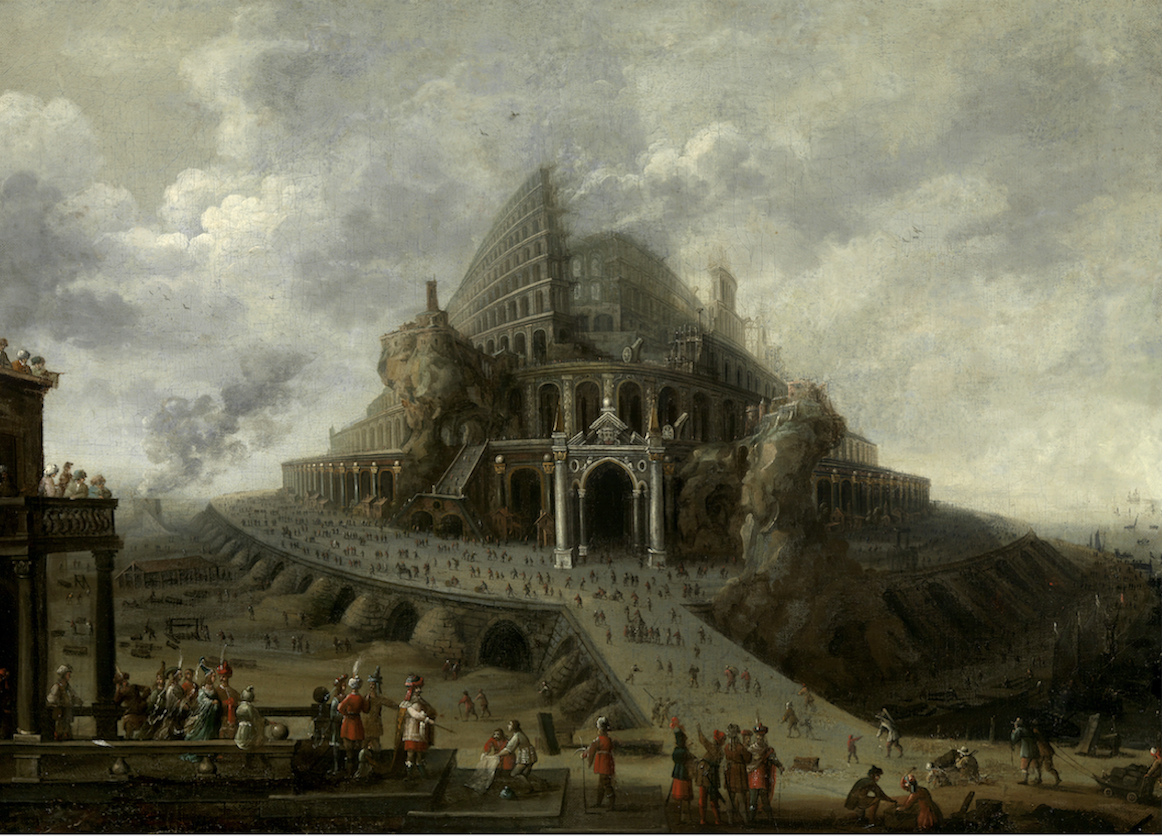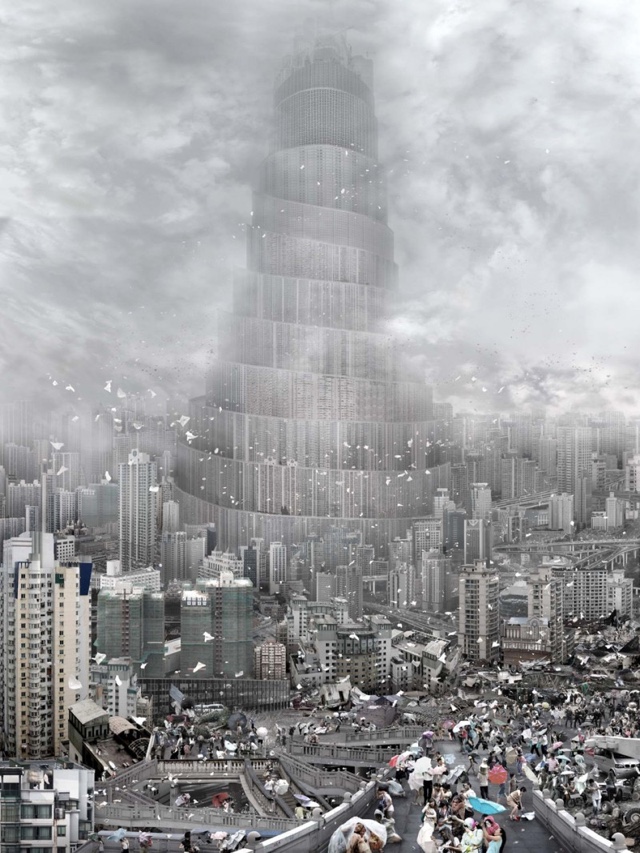
In 2012/13 the Musée des Beaux Arts in Lille organised a surprising exhibition entitled “Babel”. Here, contemporary works of art (as shown in the illustrations below) depicting the ancient, biblical theme of the construction of the Tower of Babel as narrated in Genesis XI:1-9 had been brought together.

The result was fabulous, as not only beautiful, new and idiosyncratic interpretations of the subject were on display, but, above all, the exhibition pointed a finger at the large-scale, dubious, hyperbolic urban developments mushrooming at dazzling speed in Shanghai, Abu Dhabi and other areas.

Meanwhile it is 2016 and the world has changed faster than anyone had imagined. The new towers of Babel no longer appear to symbolise endless growth but are turning into sad reminders of an over-ambitious past.
The building of the Tower of Babel as a theme for paintings originated in 16th century Antwerp. Pieter Brueghel painted two versions on the subject, which are now considered absolute icons among western art. In the rapidly growing, cosmopolitan Antwerp of those days, the theme, and especially the confusion of tongues resulting from God’s intervention, would have been considered extremely contemporary. And indeed, the sole purpose of Pieter Brueghel’s renowned interpretation of the biblical tale, currently on view in Vienna (https://www.khm.at/) was to provoke a discussion among dinner guests at the country house of Niclaes Jonghling, who had commissioned this work of art. No doubt these conversations were about the regulations needed for the rapidly-growing, cosmopolitan community. (http://www.jhna.org/index.php/past-issues/vol-62-2014/295-tower-of-babel-and-harmonious-community)
In the second half of the 16th century as well as the first half of the 17th century, Pieter Brueghels paintings initiated a true hype in art productions in the city. Between 1550 and 1650 numerous paintings on this subject were created. Not all depicted King Nimrod prominently and, likewise, the architecture was not always fitted with porticos and arches.
The version discussed here shows the construction of the tower in full swing as illustrated by cranes standing on the terraces. In front centre, Nimrod himself is depicted giving instructions as site supervisor. In contrast to Brueghel’s version, the tower is moved slightly further back, and the dark clouds seem to herald God’s intervention.
In particular, the atmospheric qualities make the painting stand out among the series of interpretations on this subject, as expertly outlined in Helmut Minkowski’s 1991 book (H. Minkowski, Vermutungen über den Turm zu Babel, 1991). This special position was reaffirmed through the fact that, thanks to painstaking microscopic examination, a signature had been found, albeit nearly illegible, which could be attributed to a member of the Van der Borcht family. Not much is known of this family, except that they too had to leave Flanders for religious reasons and headed to Frankenthal.
